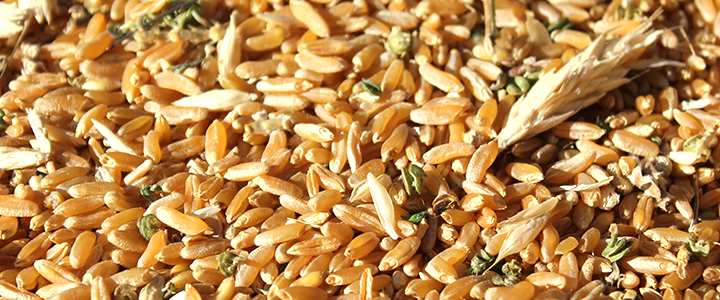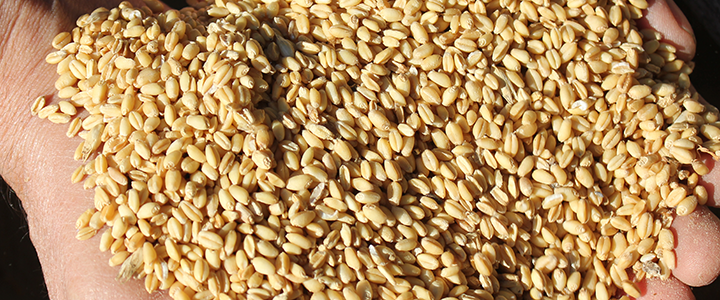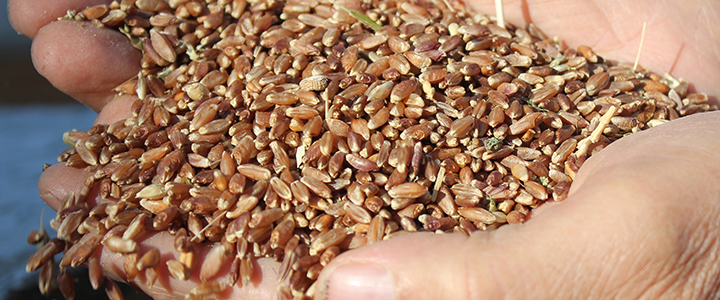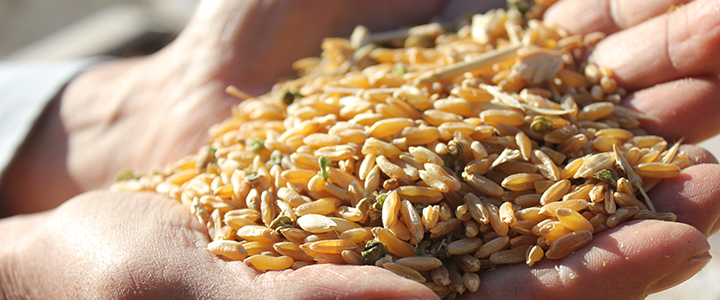Wheat

Nothing evokes farming more than the imagery of a wheat harvest, a farmer with a wheat straw in his or her mouth, or the idea that bread is only as good as the farmer who grew the grain. Wheat, originally from the near east region of the world, is one of the earliest grains mastered and manipulated by humanity as our society evolved from the migratory lifestyle of hunting and gathering clans to the agrarian shift, some 10,000 to 15,000 years ago, which saw the birth of villages, cities and, eventually, fostered the emergence of civilizations. Wheat is now cultivated worldwide and is the third largest produced grain (713 million tons) after corn (over 1 billion tons), and rice (745 million tons) produced in 2013.
With an established tradition of raising heirloom products: tomatoes, beans, leafy vegetables, pigs, poultry, and many other agricultural products, Lone Willow Ranch is now venturing into the realm of ancient wheat grains, specifically Sonora soft white, Blue Ethiopian Emmer, and Kamut. Each grain has its specific characteristic which we selected for their unique qualities and corresponding applications.

Sonora soft white
The Sonora soft white wheat is a cultivar from landrace in Durango, Mexico. Perhaps the first successful wheat in Mexico from 1500. Also grown by Pima and Yuma Indians in Arizona, this ancient heirloom grain is regaining popularity for its high protein content and sturdy nature. It is an early wheat with only 90 days to maturity when planted in the spring. Perfect for light-colored tortillas and for yeasted bread baking, the Sonora wheat was widely harvested in California in the early 1800s up through the civil war. The California Central Valley grew so much of it in the 1880s that, as the largest wheat production anywhere in the world, was able to set the floor price at the London International Wheat Exchange. Production sharply declined into the 20th century, barely surviving into the 1950s. The North American continent has not seen any commercial production since. Being a fierce drought and rust resistant variety, it is making a comeback, at least in small farms, considering its ability to grow without irrigation and on low fertility soil.
Ethiopian Blue Tinge
The Ethiopian Blue Tinge emmer wheat is exceptional in that it is almost totally free threshing. Its large seeds are perfect for pasta making. Unlike the Sonora white, it is not drought tolerant and is best planted in slower draining soil in wetter areas of California. Its stature is short, further underscoring its need for water and more time to produce its berries. It requires high nitrogen and responds well to calcium sulfate (gypsum) for its sulfur requirements. The grain requires excellent soil for good yield, hence rotation is usually needed for best results. Dan Jason introduced the Ethiopian emmer into North America in the 1990s.
Khorasan “Kamut”
The Khorasan “Kamut” wheat was first described in the early 1920s; although its exact origin is unknown, this ancient grain most likely came from the Fertile Crescent, out of which its name was adopted from the Afghan province of Khorasan. The Khorasan wheat reached the US in 1949 with little interest. The grain was reintroduced in 1977 by two Montana farmers, Mack and Bob Quinn, who trademarked it as Kamut (Egyptian hieroglyph meaning “wheat, grain and wheaten bread”) in 1990. The grain is twice the size of modern wheat kernels with allow it to pack much more proteins, lipids, amino acids, vitamins and minerals. In order to sell Kamut wheat, its trademark isolates the grain from any genetic manipulation, requires organically certified cultivation, must contain a protein range from 12 to 18%, and must be 99% free of modern wheat’s contaminating varieties. The grain must feature between 400 and 1000ppb of selenium. Finally, any derived product, such as pasta products, labeled as Kamut, must contain a minimum of 50% Kamut grain.

